-
 Bitcoin
Bitcoin $106,437.2012
0.82% -
 Ethereum
Ethereum $2,442.5287
0.82% -
 Tether USDt
Tether USDt $1.0005
-0.02% -
 XRP
XRP $2.1812
-0.27% -
 BNB
BNB $645.1327
0.45% -
 Solana
Solana $146.2379
0.39% -
 USDC
USDC $0.9999
-0.01% -
 TRON
TRON $0.2751
0.92% -
 Dogecoin
Dogecoin $0.1662
-0.23% -
 Cardano
Cardano $0.5827
-1.22% -
 Hyperliquid
Hyperliquid $37.5225
0.04% -
 Bitcoin Cash
Bitcoin Cash $479.0877
4.02% -
 Sui
Sui $2.7846
-3.27% -
 Chainlink
Chainlink $13.3576
0.84% -
 UNUS SED LEO
UNUS SED LEO $9.0252
-1.20% -
 Stellar
Stellar $0.2455
-1.07% -
 Avalanche
Avalanche $18.0680
-1.81% -
 Toncoin
Toncoin $2.8948
-1.07% -
 Shiba Inu
Shiba Inu $0.0...01164
-1.65% -
 Litecoin
Litecoin $85.0637
-0.06% -
 Hedera
Hedera $0.1526
-0.89% -
 Monero
Monero $316.2941
0.78% -
 Ethena USDe
Ethena USDe $1.0003
-0.04% -
 Polkadot
Polkadot $3.4113
-1.87% -
 Dai
Dai $1.0000
-0.01% -
 Bitget Token
Bitget Token $4.4488
5.16% -
 Uniswap
Uniswap $7.1740
3.09% -
 Pi
Pi $0.5968
11.43% -
 Pepe
Pepe $0.0...01010
-0.65% -
 Aave
Aave $264.3189
0.40%
Can I buy after the volume breaks through the 20-day moving average and then the volume shrinks and then the callback is pulled back?
When volume breaks above the 20-day MA in crypto trading, it often signals growing interest and potential price movement, but confirmation through price action and additional indicators is crucial to avoid false signals.
Jun 25, 2025 at 12:00 pm
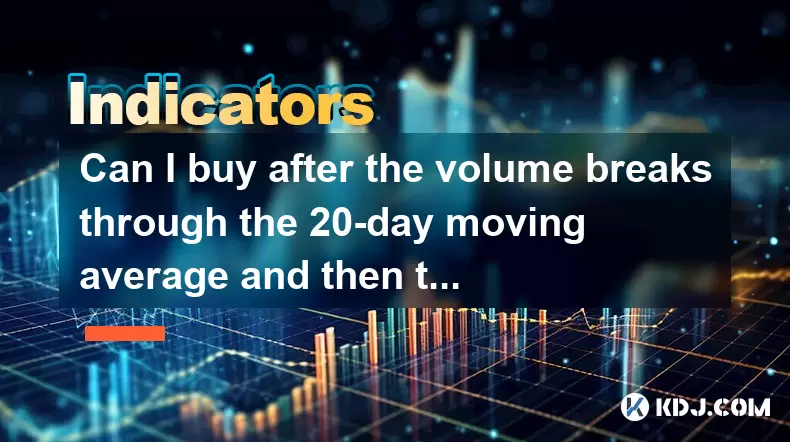
Understanding Volume and Moving Averages in Cryptocurrency Trading
In the world of cryptocurrency trading, volume and moving averages are two critical indicators that traders rely on to make informed decisions. The 20-day moving average (MA) is a popular tool used to identify trends and potential entry or exit points. When volume breaks through this average, it often signals increased interest in an asset, which may precede a price movement.
Volume reflects the number of assets being traded over a specific period. A surge in volume above the 20-day MA can indicate strong buying or selling pressure. However, interpreting these signals requires context and caution, especially in the volatile crypto market where false breakouts are common.
What Happens When Volume Breaks Through the 20-Day MA?
When you observe volume breaking through the 20-day moving average, it’s typically seen as a precursor to a trend change. This breakout suggests that more participants are entering the market, potentially pushing the price higher or lower depending on the direction of the trade.
- Increased Buying Pressure: If the price is rising alongside the volume breakout, it could signal a bullish trend.
- Selling Pressure: Conversely, if the price drops while volume surges, it might indicate a bearish sentiment.
However, this alone isn’t enough to confirm a sustainable move. Traders must look for follow-through in both price and volume to validate the strength of the breakout.
Interpreting Shrinking Volume After a Breakout
After a volume breakout, a decline in trading volume can be just as telling. Shrinking volume post-breakout may suggest that the initial momentum is fading. In technical analysis, this phenomenon is often interpreted as a sign of consolidation or even exhaustion of the current trend.
- Consolidation Phase: Lower volume after a spike can mean the market is taking a breather before continuing the trend.
- Potential Reversal: If the volume dries up quickly and the price fails to continue its move, it might point to a reversal.
It’s important to monitor how the price behaves during this phase. A healthy pullback should see reduced volume, indicating that sellers aren't aggressively pushing the price down.
Analyzing the Pullback After Volume Shrinkage
A pullback following a volume breakout and subsequent shrinkage can present a strategic entry opportunity for traders. During this phase, the price retraces part of its prior move but doesn’t necessarily invalidate the trend.
- Support Levels: Watch for key support levels where the price might stabilize.
- Volume Confirmation: Ideally, during a healthy pullback, volume remains low or starts to pick up again near the end of the decline.
Traders often look for reaccumulation patterns, where institutional buyers start stepping in again, signaling that the trend may resume. It’s crucial to avoid jumping into trades too early without confirming signs of renewed strength.
How to Trade This Scenario: Practical Steps
If you’re considering entering a position based on volume breaking through the 20-day MA, followed by shrinking volume and a pullback, here’s how you can approach it:
- Identify the Initial Breakout: Confirm that volume has indeed surpassed the 20-day MA significantly.
- Monitor Price Action Post-Breakout: Observe whether the price continues to move in the direction of the breakout or stalls.
- Watch for Volume Decline: Once the volume starts to drop, assess whether the price is still holding above key levels.
- Look for Pullback Entry Points: Wait for the price to retrace toward a support zone or a moving average like the 10 or 20-day MA.
- Seek Confirmation Signals: Use candlestick patterns, RSI, or MACD to confirm that the pullback is ending and the trend is resuming.
Each step should be validated with multiple tools to reduce the risk of false signals, especially in fast-moving cryptocurrency markets.
Frequently Asked Questions
Q1: Is volume always a reliable indicator in cryptocurrency trading?
While volume is a valuable metric, it shouldn’t be used in isolation. Combining it with other indicators like price action, moving averages, or oscillators provides a more comprehensive view.
Q2: Can I use this strategy on different timeframes?
Yes, this strategy can be applied across various timeframes, but shorter timeframes may experience more noise and false signals. Adjust your expectations and confirmation methods accordingly.
Q3: Should I always wait for a pullback before entering a trade after a volume breakout?
Not necessarily. Some traders enter immediately after a confirmed breakout. However, waiting for a pullback can offer better risk-reward ratios and reduce exposure to false breakouts.
Q4: What tools can help confirm a valid pullback?
Tools like Fibonacci retracement levels, trendlines, and candlestick reversal patterns can help confirm whether a pullback is likely to reverse and continue the trend.
Disclaimer:info@kdj.com
The information provided is not trading advice. kdj.com does not assume any responsibility for any investments made based on the information provided in this article. Cryptocurrencies are highly volatile and it is highly recommended that you invest with caution after thorough research!
If you believe that the content used on this website infringes your copyright, please contact us immediately (info@kdj.com) and we will delete it promptly.
- Dogecoin's Crossroads: Buy Signal or Risky Business?
- 2025-06-25 18:25:12
- Pi Network Price Prediction: Navigating the Coin's Breakout and Potential Drop
- 2025-06-25 18:25:12
- Green Minerals, Panther Metals, and the Bitcoin Buy-In: A New Era for Mining?
- 2025-06-25 18:35:13
- Shiba Inu, Dogecoin, and Meme Coins: What's the Hype in 2025?
- 2025-06-25 16:25:12
- JasmyCoin's Wild Ride: 6x Setup or Just a Mirage?
- 2025-06-25 16:25:12
- Mastercard's Stablecoin Integration: Revolutionizing On-Chain Commerce, NY Style
- 2025-06-25 16:45:12
Related knowledge
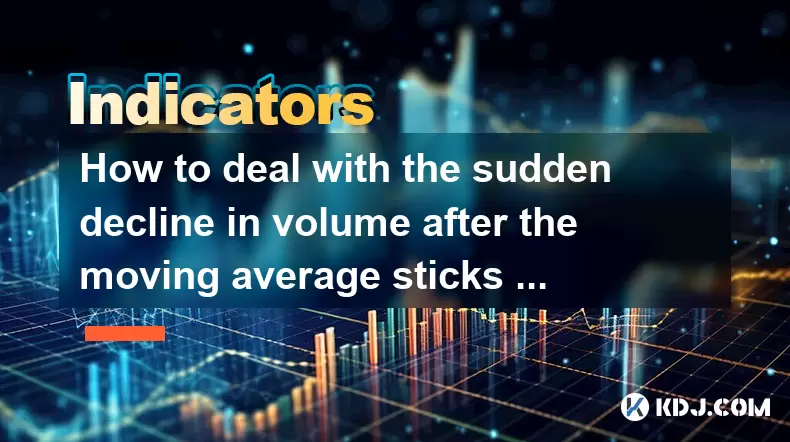
How to deal with the sudden decline in volume after the moving average sticks together?
Jun 25,2025 at 06:35pm
Understanding the Moving Average Convergence and Its ImplicationsIn the world of cryptocurrency trading, moving averages (MAs) are essential tools used to identify trends and potential reversals. When multiple moving averages converge or 'stick together,' it often indicates a period of consolidation or indecision in the market. This phenomenon can be ob...
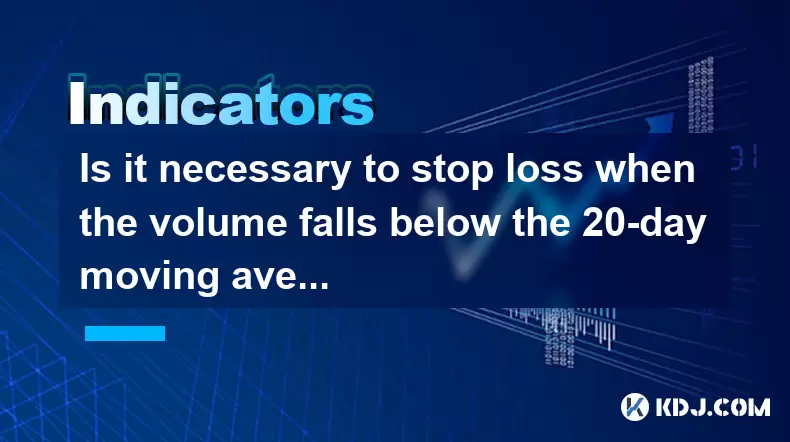
Is it necessary to stop loss when the volume falls below the 20-day moving average?
Jun 25,2025 at 05:00pm
Understanding the 20-Day Moving Average in Cryptocurrency TradingIn cryptocurrency trading, technical analysis plays a pivotal role in decision-making. One of the most commonly used indicators is the 20-day moving average (MA). This metric calculates the average price of an asset over the past 20 days and helps traders identify trends and potential reve...
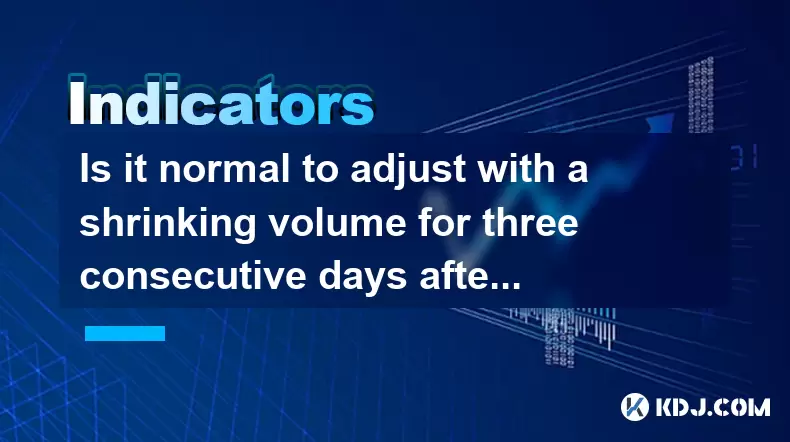
Is it normal to adjust with a shrinking volume for three consecutive days after breaking through the previous high with a large volume?
Jun 25,2025 at 03:49pm
Understanding Volume and Price Relationship in Cryptocurrency TradingIn cryptocurrency markets, volume is a critical metric that reflects the number of assets traded over a specific period. When a cryptocurrency breaks through a previous high with large volume, it typically signals strong buying pressure and market confidence. However, it's not uncommon...
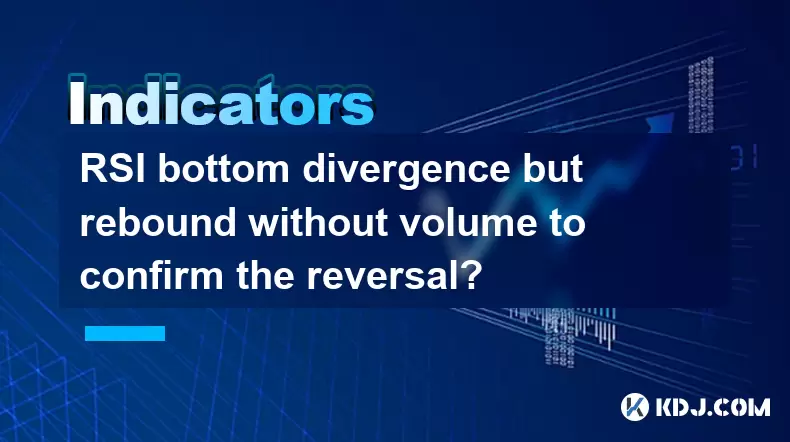
RSI bottom divergence but rebound without volume to confirm the reversal?
Jun 25,2025 at 04:42pm
Understanding RSI Bottom DivergenceRelative Strength Index (RSI) is a momentum oscillator used in technical analysis to measure the speed and change of price movements. RSI bottom divergence occurs when the price of an asset makes a new low, but the RSI does not confirm that low and instead forms a higher low. This pattern suggests weakening downward mo...
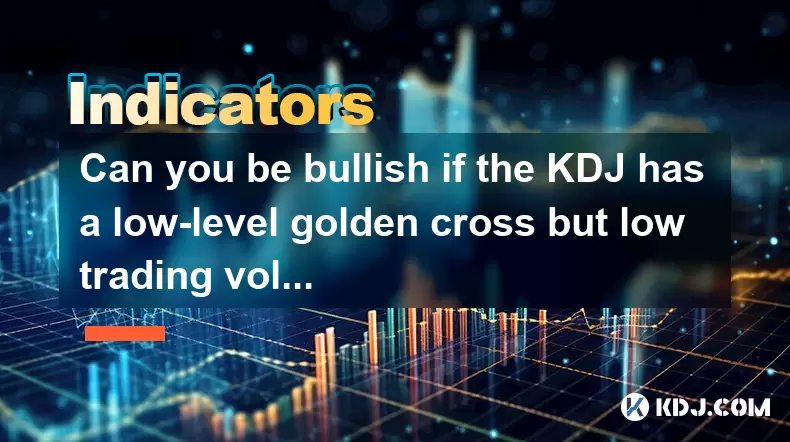
Can you be bullish if the KDJ has a low-level golden cross but low trading volume?
Jun 25,2025 at 03:14pm
Understanding the KDJ Indicator in Cryptocurrency TradingThe KDJ indicator, also known as the stochastic oscillator, is a momentum-based technical analysis tool widely used in cryptocurrency trading. It comprises three lines: the %K line (fast stochastic), the %D line (slow stochastic), and the J line (divergence value). These lines oscillate between 0 ...
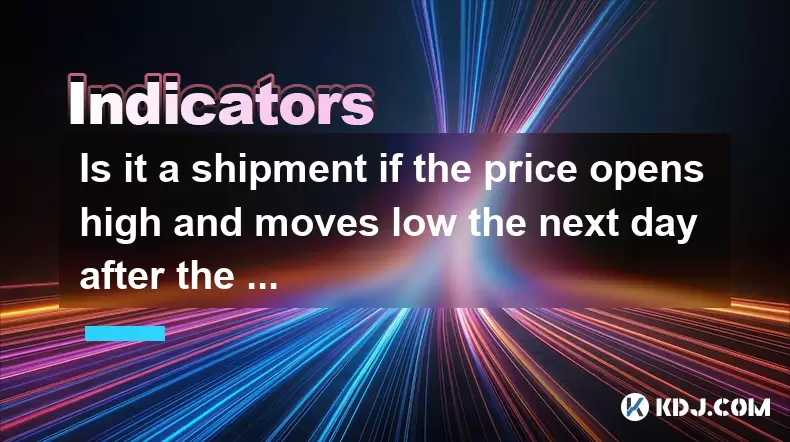
Is it a shipment if the price opens high and moves low the next day after the daily limit with huge volume?
Jun 25,2025 at 12:56pm
Understanding the Concept of a Shipment in Cryptocurrency TradingIn cryptocurrency trading, the term shipment refers to a scenario where large volumes of an asset are sold off rapidly, often leading to a significant price drop. This is typically associated with whale activity or coordinated selling by major holders. When traders observe certain patterns...

How to deal with the sudden decline in volume after the moving average sticks together?
Jun 25,2025 at 06:35pm
Understanding the Moving Average Convergence and Its ImplicationsIn the world of cryptocurrency trading, moving averages (MAs) are essential tools used to identify trends and potential reversals. When multiple moving averages converge or 'stick together,' it often indicates a period of consolidation or indecision in the market. This phenomenon can be ob...

Is it necessary to stop loss when the volume falls below the 20-day moving average?
Jun 25,2025 at 05:00pm
Understanding the 20-Day Moving Average in Cryptocurrency TradingIn cryptocurrency trading, technical analysis plays a pivotal role in decision-making. One of the most commonly used indicators is the 20-day moving average (MA). This metric calculates the average price of an asset over the past 20 days and helps traders identify trends and potential reve...

Is it normal to adjust with a shrinking volume for three consecutive days after breaking through the previous high with a large volume?
Jun 25,2025 at 03:49pm
Understanding Volume and Price Relationship in Cryptocurrency TradingIn cryptocurrency markets, volume is a critical metric that reflects the number of assets traded over a specific period. When a cryptocurrency breaks through a previous high with large volume, it typically signals strong buying pressure and market confidence. However, it's not uncommon...

RSI bottom divergence but rebound without volume to confirm the reversal?
Jun 25,2025 at 04:42pm
Understanding RSI Bottom DivergenceRelative Strength Index (RSI) is a momentum oscillator used in technical analysis to measure the speed and change of price movements. RSI bottom divergence occurs when the price of an asset makes a new low, but the RSI does not confirm that low and instead forms a higher low. This pattern suggests weakening downward mo...

Can you be bullish if the KDJ has a low-level golden cross but low trading volume?
Jun 25,2025 at 03:14pm
Understanding the KDJ Indicator in Cryptocurrency TradingThe KDJ indicator, also known as the stochastic oscillator, is a momentum-based technical analysis tool widely used in cryptocurrency trading. It comprises three lines: the %K line (fast stochastic), the %D line (slow stochastic), and the J line (divergence value). These lines oscillate between 0 ...

Is it a shipment if the price opens high and moves low the next day after the daily limit with huge volume?
Jun 25,2025 at 12:56pm
Understanding the Concept of a Shipment in Cryptocurrency TradingIn cryptocurrency trading, the term shipment refers to a scenario where large volumes of an asset are sold off rapidly, often leading to a significant price drop. This is typically associated with whale activity or coordinated selling by major holders. When traders observe certain patterns...
See all articles























































































